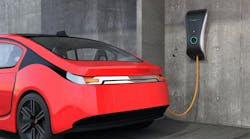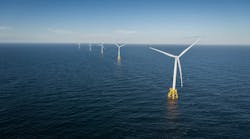The industry’s shift to solid-state lighting sources such as light-emitting diodes (LEDs) continues to be one of the most dynamic areas of product development and market realignment in the electrical industry. This transition has been getting substantial support from the U.S. Department of Energy, which offers programs for performance testing and standardized methods for reporting performance characteristics of the new technology, with an eye toward assisting market acceptance.
According to a recent DOE forecast, LED lighting will represent 74 percent of sales in the U.S. general illumination market by 2030 and will save about 2,700 terawatt-hours and $250 billion over a 20-year period. Navigant Research, in a report released this week, estimated that worldwide shipments of LED lamps will grow from 68 million units in 2013 to 1.28 billion units annually by 2021, and that the markets for every other lighting technology will contract over that period.
DOE released two reports over the past few weeks on areas where there is still some distance to close before LEDs can be considered better than established light sources — recessed troffer applications and environmental impact from end-of-life disposal.
One of the most valuable targets for lighting manufacturers is in the millions of linear fluorescent fixtures already installed in the ceilings of the world. DOE’s CALiPER testing program last week released its report on LED lighting for one slice of this market, “CALiPER Exploratory Study: Recessed Troffer Lighting.”
The study found that while LED replacements have reached a point where they can be competitive with fluorescent troffers, offering comparable efficacy and performance, the results still don’t consistently exceed expectations set by the incumbent technology, particularly when retrofitted into existing luminaires. In fact, the study highlighted some significant shortcomings in light patterns, wide variability in color quality and problems with glare and flicker that could make it difficult to justify a conversion.
“Luminaires retrofitted with LED lamps performed in the same efficacy range as the fluorescent benchmarks, so it is not clear that they offer guaranteed energy savings when compared to fluorescent troffers equipped with 25W or 28W high-performance lamps and electronic dimming ballasts,” the study said. “The color quality from these LED lamps ranged widely from very poor (CRI in the 60s) to very good (CRI in the upper 80s, which is slightly higher than typical high-performance T8 fluorescent lamps), so specifiers need to exercise care to ensure the new lamps are not reducing color quality compared to the incumbent fluorescent.”
Dimming performance and glare were found to be particular problems. “One area of concern is that one third of the dedicated LED troffers were equipped with 0-10V dimming drivers that caused the LEDs to exhibit flicker when dimmed. It is important for the lighting industry to develop, adopt, and apply standards to limit flicker that may contribute to health concerns and reduced task performance.”
“LED lamps that have exposed rows of bright LEDs are more likely to produce objectionable stripes and patterns in existing troffers than LED lamps that have a diffuse finish on the luminous half of the tube. Even diffuse LED lamps produced a more ‘stripey’ troffer appearance and increased perceived glare, compared to fluorescent lamping. This was true whether K12 lensed troffers or parabolic louvered troffers were retrofitted.”
The CALiPER testing team’s findings will shape the program’s future evaluations of recessed troffers. Work to improve dimming drivers is needed to reduce flicker and provide smoother dimming performance with lower minimum output levels, the CALiPER team said. Further, a change in LED troffer light distribution could reduce perceived glare for users and reflected glare on electronic display screens.
Another report from the DOE presented the third phase of an ongoing lifecycle assesment of the environmental impact of solid-state lighting. The new report covers chemical analysis of the lamps’ components and materials. The key findings reported that the models tested were generally below thresholds for Federally regulated elements, although volatile mercury in the compact fluorescent lamps (CFLs) was “presumed to have escaped detection.” Yet all the lamps, regardless of technology, exceeded at least one California threshold — typically for copper, zinc, antimony or nickel. The greatest contributors to the waste problem were the metal screw bases, drivers, ballasts and wires or filaments — internal LED light sources generally did not cause LED lamps to exceed thresholds.
The adoption of LED lighting will come rapidly, then drop off once the market penetration of LEDs reaches a certain point, a decline that may begin within five years, according to the Navigant study. Although shipments of LED products “will expand at a compound annual growth rate of 44.3 percent through 2021, they will not be sufficient to compensate for the overall decline in commercial lighting revenue as the industry moves toward much more long-lasting lamps. Lamp and luminaire revenue will both grow for the next few years, the study concludes, before beginning an inexorable decline in 2017.”
Latest from Technology
Latest from Technology








